
Copernical Team
Watch Live: NASA Artemis 1 rocket begins pre-launch rollout
 NASA began rolling out its Space Launch System rocket to the launch pad at Kennedy Space Center in Florida on Tuesday night, ahead of its premiere flight later this month.
The uncrewed test flight is part of the plan to return man to the moon.
NASA live-streamed the rollout of the Artemis I Moon rocket, the largest ever built by NASA, on Launch Pad 39B. The movement was expected
NASA began rolling out its Space Launch System rocket to the launch pad at Kennedy Space Center in Florida on Tuesday night, ahead of its premiere flight later this month.
The uncrewed test flight is part of the plan to return man to the moon.
NASA live-streamed the rollout of the Artemis I Moon rocket, the largest ever built by NASA, on Launch Pad 39B. The movement was expected Researchers propose plasma-based method of extracting oxygen on Mars
 A group of scientists have developed a plasma-based method of producing and separating oxygen on Mars, according to a study published Thursday.
The team of researchers from the University of Lisbon, the Massachusetts Institute of Technology, Sorbonne University, Eindhoven University of Technology and the Dutch Institute for Fundamental Energy Research shared a method that can harness an
A group of scientists have developed a plasma-based method of producing and separating oxygen on Mars, according to a study published Thursday.
The team of researchers from the University of Lisbon, the Massachusetts Institute of Technology, Sorbonne University, Eindhoven University of Technology and the Dutch Institute for Fundamental Energy Research shared a method that can harness an SOLARIS: Preparing for Space-Based Solar Power
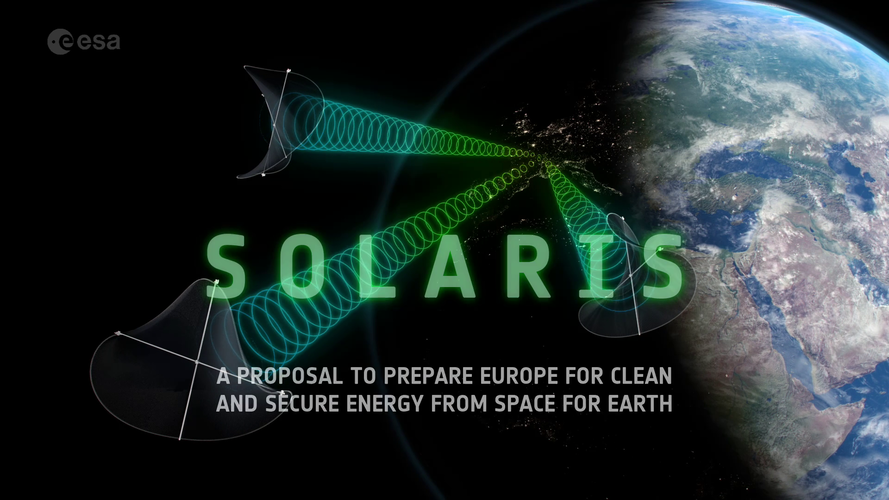 Video:
00:03:33
Video:
00:03:33
To prepare Europe for future decision making on Space-Based Solar Power, ESA has proposed a preparatory programme for Europe, initially named SOLARIS, for the upcoming ESA Council at Ministerial Level in November 2022.
Space-based solar power is a potential source of clean, affordable, continuous, abundant and secure energy. This basic concept has been given fresh urgency by the need for new sources of clean and secure energy to aid Europe’s transition to a Net Zero carbon world by 2050. If Europe wants to benefit from this game-changing capability then we need to start investing now.
ESA has undertaken
Rhine river runs dry
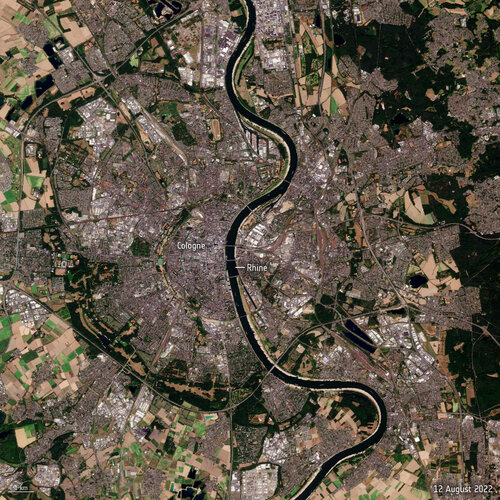 Image:
Water levels on the Rhine River have continued to drop owing to soaring temperatures and lack of rainfall - preventing many vessels from navigating through the river's waters at full capacity. These Copernicus Sentinel-2 images show the stark difference between August 2021 and August 2022.
Image:
Water levels on the Rhine River have continued to drop owing to soaring temperatures and lack of rainfall - preventing many vessels from navigating through the river's waters at full capacity. These Copernicus Sentinel-2 images show the stark difference between August 2021 and August 2022. NASA's Lucy team discovers moon around asteroid Polymele

Even before its launch, NASA's Lucy mission was already on track to break records by visiting more asteroids than any previous mission. Now, after a surprise result from a long-running observation campaign, the mission can add one more asteroid to the list.
On March 27, Lucy's science team discovered that the smallest of the mission's Trojan asteroid targets, Polymele, has a satellite of its own. On that day, Polymele was expected to pass in front of a star, allowing the team to observe the star blink out as the asteroid briefly blocked, or occulted, it. By spreading 26 teams of professional and amateur astronomers across the path where the occultation would be visible, the Lucy team planned to measure the location, size, and shape of Polymele with unprecedented precision while it was outlined by the star behind it.
Mars model provides method for landing humans on Red Planet
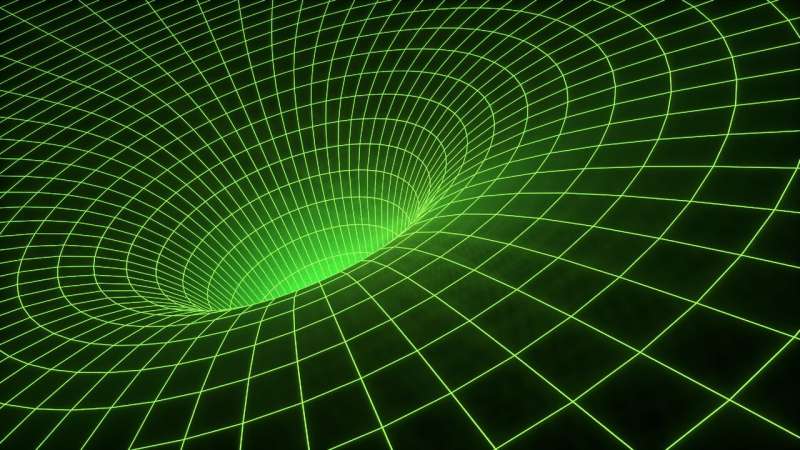
A mathematical model developed by space medicine experts from The Australian National University (ANU) could be used to predict whether an astronaut can safely travel to Mars and fulfil their mission duties upon stepping foot on the Red Planet.
The ANU team simulated the impact of prolonged exposure to zero gravity on the cardiovascular system to determine whether the human body can tolerate Mars' gravitational forces—which aren't as strong as on Earth—without fainting or suffering a medical emergency when stepping out of a spacecraft.
The model could be used to assess the impact of short and long duration space flight on the body and could serve as another important piece of the puzzle in helping land humans on Mars.
Dr. Lex van Loon, a Research Fellow from the ANU Medical School, said although there are multiple risks associated with travelling to Mars, the biggest concern is prolonged exposure to microgravity—near zero gravity—which, combined with exposure to damaging radiation from the Sun, could cause "fundamental" changes to the body.
"We know it takes about six to seven months to travel to Mars and this could cause the structure of your blood vessels or the strength of your heart to change due to the weightlessness experienced as a result of zero gravity space travel," Dr.
NASA's Europa Clipper spacecraft kicks assembly into high gear
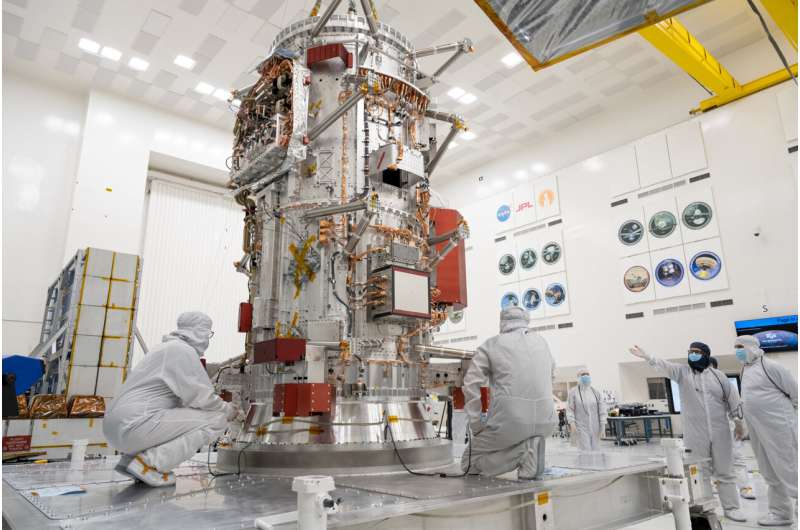
The core of NASA's Europa Clipper spacecraft has taken center stage in the Spacecraft Assembly Facility at the agency's Jet Propulsion Laboratory in Southern California. Standing 10 feet (3 meters) high and 5 feet (1.5 meters) wide, the craft's main body will for the next two years be the focus of attention in the facility's ultra-hygienic High Bay 1 as engineers and technicians assemble the spacecraft for its launch to Jupiter's moon Europa in October 2024.
Scientists believe the ice-enveloped moon harbors a vast internal ocean that may have conditions suitable for supporting life. During nearly 50 flybys of Europa, the spacecraft's suite of science instruments will gather data on the moon's atmosphere, surface, and interior—information that scientists will use to gauge the depth and salinity of the ocean, the thickness of the ice crust, and potential plumes that may be venting subsurface water into space.
War in Ukraine highlights the growing strategic importance of private satellite companies

Satellites owned by private companies have played an unexpectedly important role in the war in Ukraine. For example, in early August 2022, images from the private satellite company Planet Labs showed that a recent attack on a Russian military base in Crimea caused more damage than Russia had suggested in public reports. Ukrainian President Volodymyr Zelenskyy highlighted the losses as evidence of Ukraine's progress in the war.
Soon after the war began, Ukraine requested data from private satellite companies around the world. By the end of April, Ukraine was getting imagery from U.S. companies mere minutes after the data was collected.
My research focuses on international cooperation in satellite Earth observations, including the role of the private sector.
Harvesting resources on Mars with plasmas
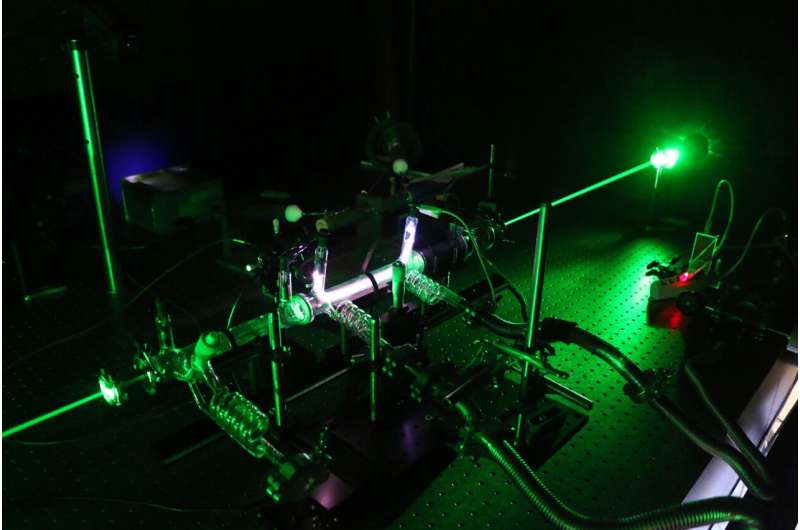
An international team of researchers came up with a plasma-based way to produce and separate oxygen within the Martian environment. It's a complementary approach to NASA's Mars Oxygen In-Situ Resource Utilization Experiment, and it may deliver high rates of molecule production per kilogram of instrumentation sent to space.
Such a system could play a critical role in the development of life-support systems on Mars and the feedstock and base chemicals necessary for processing fuels, building materials, and fertilizers.
In the Journal of Applied Physics, the team from the University of Lisbon, the Massachusetts Institute of Technology, Sorbonne University, Eindhoven University of Technology, and the Dutch Institute for Fundamental Energy Research presented a method for harnessing and processing local resources to generate products on Mars.
Kayhan Space unveils next-gen spaceflight safety platform
 With thousands of satellites and countless debris bound for busy orbits, Kayhan Space has unveiled its next-gen Pathfinder spaceflight safety platform to enable satellite and mission operators to better manage operational risks and make preemptive maneuvers based on precision analytics to avoid pileups in space.
Capella Space, Globalstar, and Lynk Global are among an initial group of leadi
With thousands of satellites and countless debris bound for busy orbits, Kayhan Space has unveiled its next-gen Pathfinder spaceflight safety platform to enable satellite and mission operators to better manage operational risks and make preemptive maneuvers based on precision analytics to avoid pileups in space.
Capella Space, Globalstar, and Lynk Global are among an initial group of leadi 
